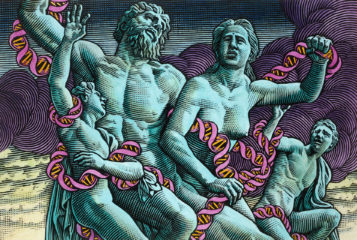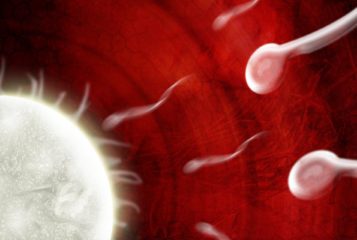The Nib is an American online magazine devoted to publishing and promoting political and non-fiction comics. This is where I came across a comic strip called 'It's All Relatives' written by Kjerstin Johnson and Alexandra Beguez. At the age of 31 years, Johnson was told by her mother that she was conceived by donor sperm. A shocked Johnson turned to a commercially available DNA test (23andMe) to collect more information on her genetic background. She describes her experience of the DNA findings that came with the 23andMe results, and with co-author Beguez address issues related to the use of direct-to-consumer DNA testing kits, such as genetic data privacy and the law.
The comic strip was nicely designed, full of bright colours and images resembling more the ones found in superhero comic books, rather than scientific textbooks. The design and simplified language used throughout would make it an enjoyable read for anyone interested in what a DNA testing kit such as 23andMe or Ancestry can do. Johnson and Beguez cover sensitive topics such as the revelation of unknown family secrets, the associated psychological impact, the support available for the affected individuals, as well as other risks related to data generated from these tests in a comprehensive, yet simple and entertaining manner.
The comic strip narrates stories of people that have used DNA testing kits and had unexpected findings and brings in opinions from two experts to discuss the implications of these findings. The experts are Brianne Kirkpatrick who is a genetic counsellor, and Professor Natalie Ram. I thought the way that the opinions of experts were included in the comic strip enabled a better understanding of the science behind these DNA testing kits. For example, I found the design of an advertisement for a fictional DNA test to include warnings like those seen for pharmaceutical advertisements particularly clever. Currently, direct-to-consumer DNA testing kits include warnings about finding out results on serious medical conditions such as predisposition to different types of cancer or Alzheimer's disease. There are no warnings, however, related to other surprising DNA results, such as finding out that one of the parents is not biologically related to the individual taking the test, or that you may discover relatives you never knew you had. This is something that should be considered by the companies offering these tests, especially as they are becoming increasingly popular.
The main story running through this comic strip is Johnson's. Unsurprisingly, she identified several half siblings through 23andMe. What was surprising, however, was that she was the only one aware that she was conceived by sperm donation. Indeed, as shown in the comic, data from a 2020 survey suggest that a significant number (34 percent) of people found out that they were the result of gamete donation through a direct-to-consumer DNA test, and not through their parents telling them. Cultural expectations surrounding gamete donation and use have changed in recent decades and this data emphasises the need of including warnings about unexpected genetic origin results on commercially available DNA tests. Other issues are also addressed, such as the terms and conditions given to users by the DNA testing companies, as well as the possibility of passing on genetic information obtained by direct-to-consumer DNA testing to other companies, such as pharmaceutical, or insurance companies.
What I thought was lacking in this comic strip was the positive outcomes of using information from DNA testing. The possibility to design new and more effective drugs for debilitating conditions, such as cancer, and enhancing personalised medicine through consented sharing of DNA data is not even brought up. Johnson and Beguez briefly describe how the use of DNA testing led to the identification and arrest of a serial killer, also good, but this is not emphasised at all, compared to Johnson's story and the risks of DNA testing and genetic data privacy.
Moreover, the comic strip does not even contemplate the reason that individuals would use donor gametes to achieve a pregnancy, and how DNA testing could assist in such cases. This is a very important and current topic. It is not unusual, for example, for single women, infertile couples, or same sex couples to be considering the use of donor gametes to have children. The use of DNA testing to screen gamete donors and recipients ensures the absence of any inherited genetic conditions in the resulting embryos. In my opinion, failure to include some very clear-cut benefits of DNA testing and focusing the comic strip almost solely on Johnson's story, made it rather one-sided.
I would say that 'It's All Relatives' was an interesting piece of work, which effectively outlined the potential risks with commercially available DNA tests. However, as a whole, I found this comic strip rather one-sided, due to its lack of considering some benefits resulting from consented DNA testing. It is ironic that Johnson is so critical of direct-to-consumer DNA tests, yet the first thing she did when she was told that she was conceived through sperm donation was to use such a DNA test to find out more about her genetic background.







Leave a Reply
You must be logged in to post a comment.